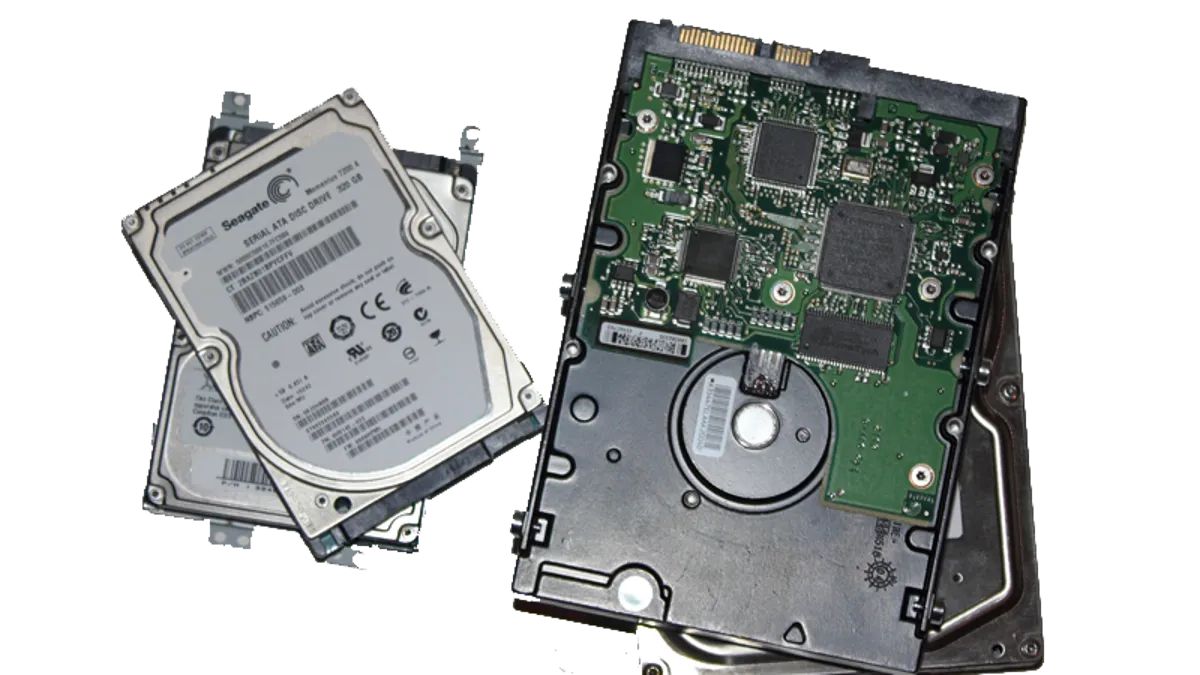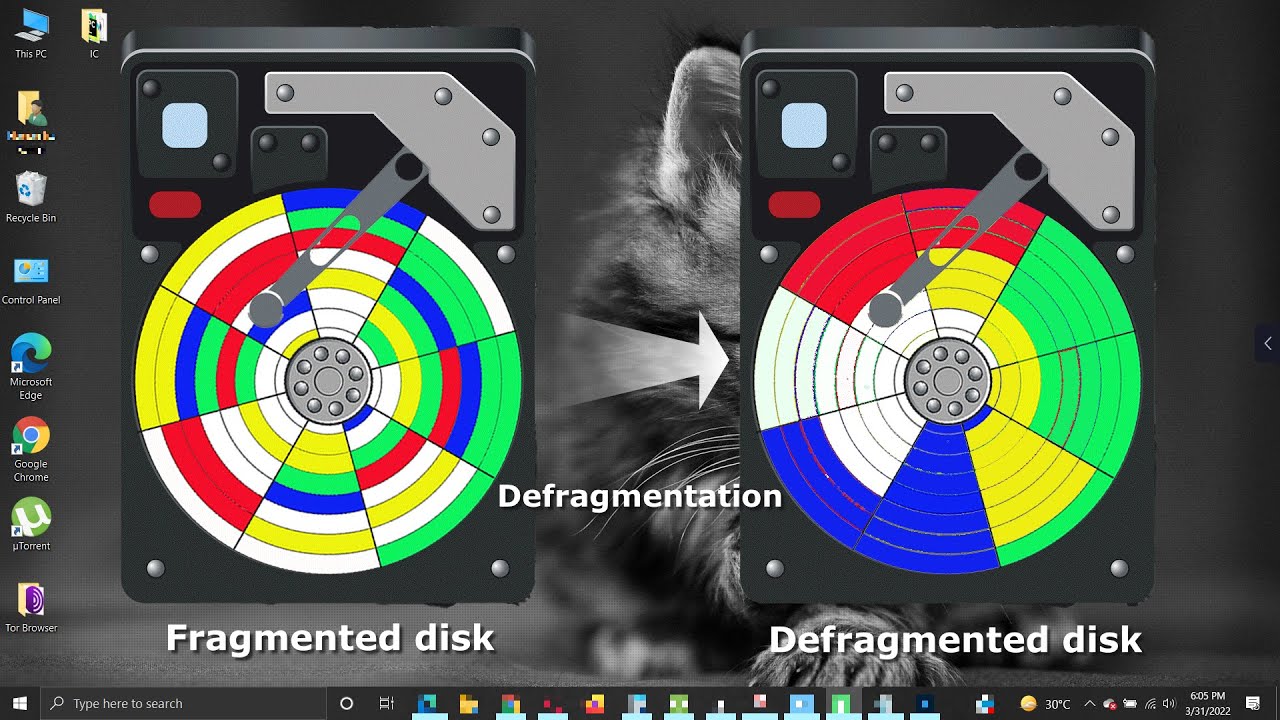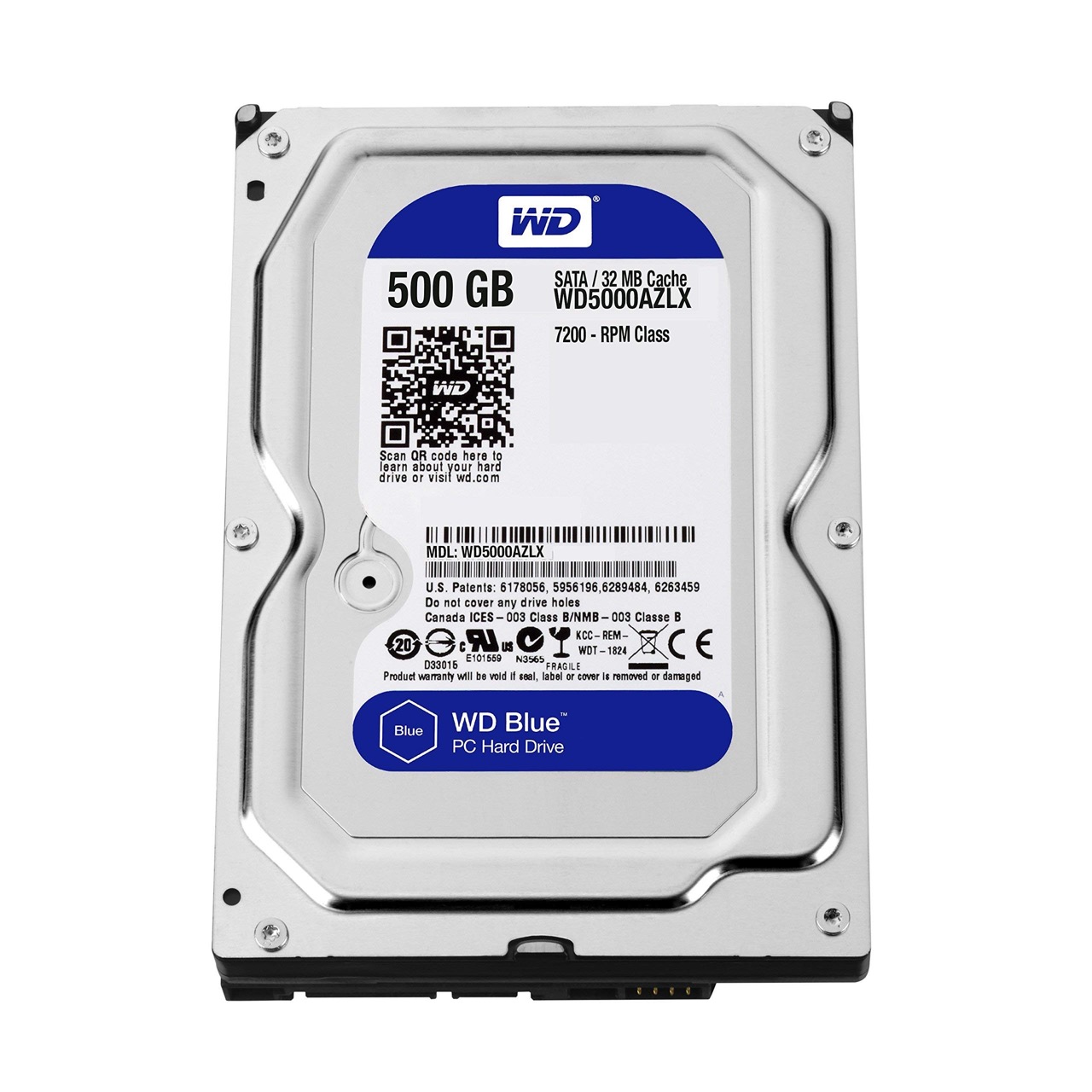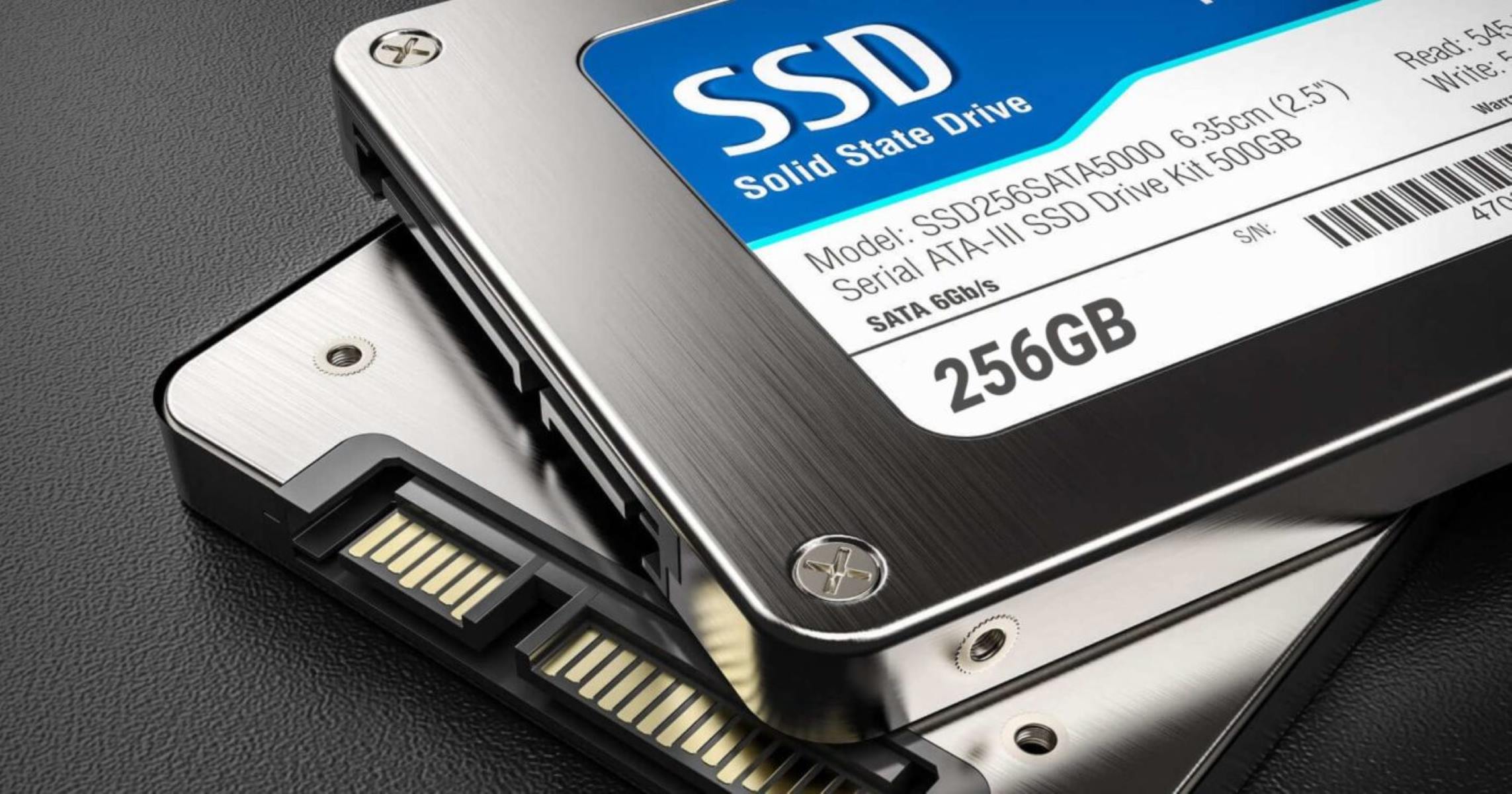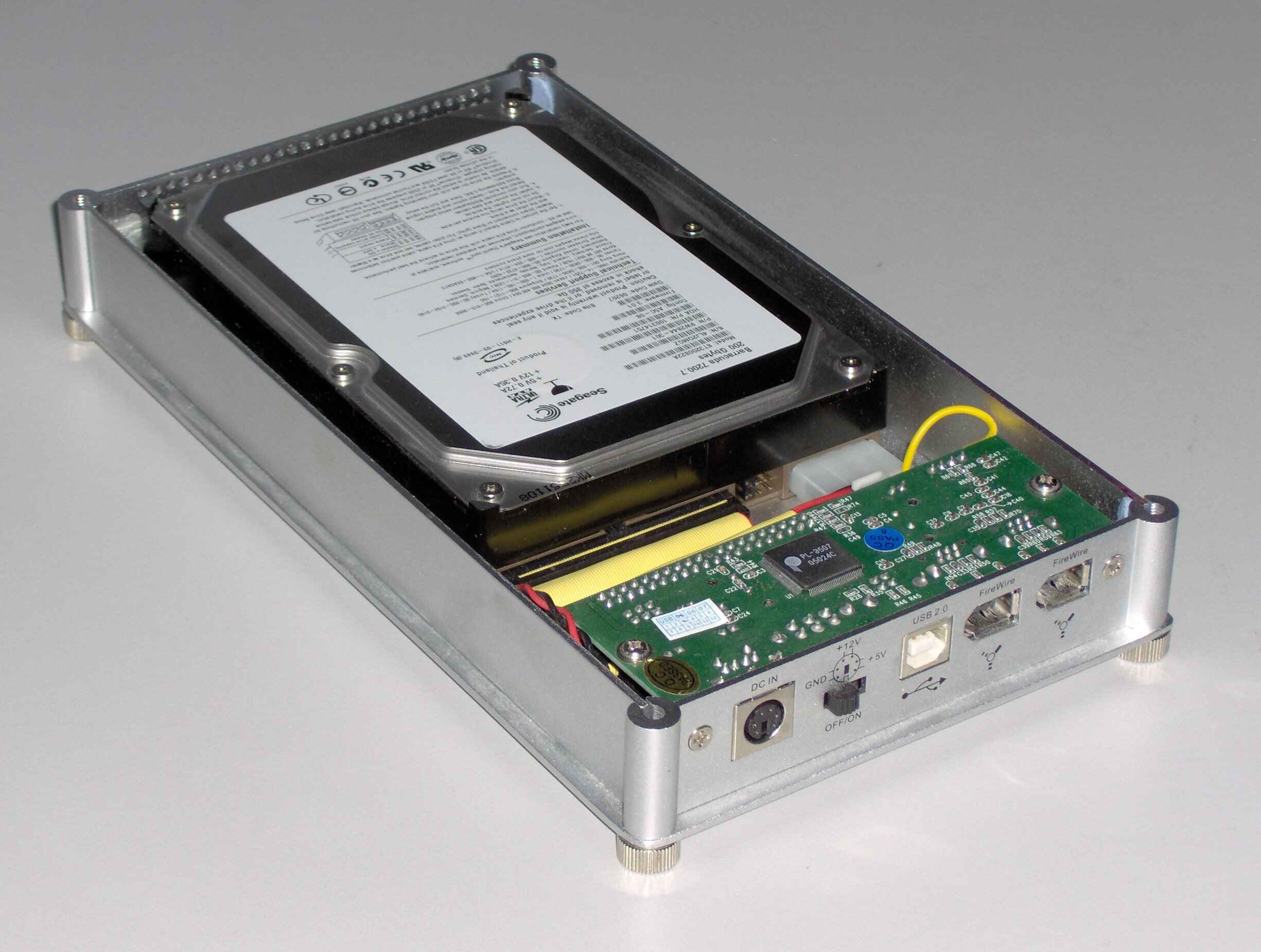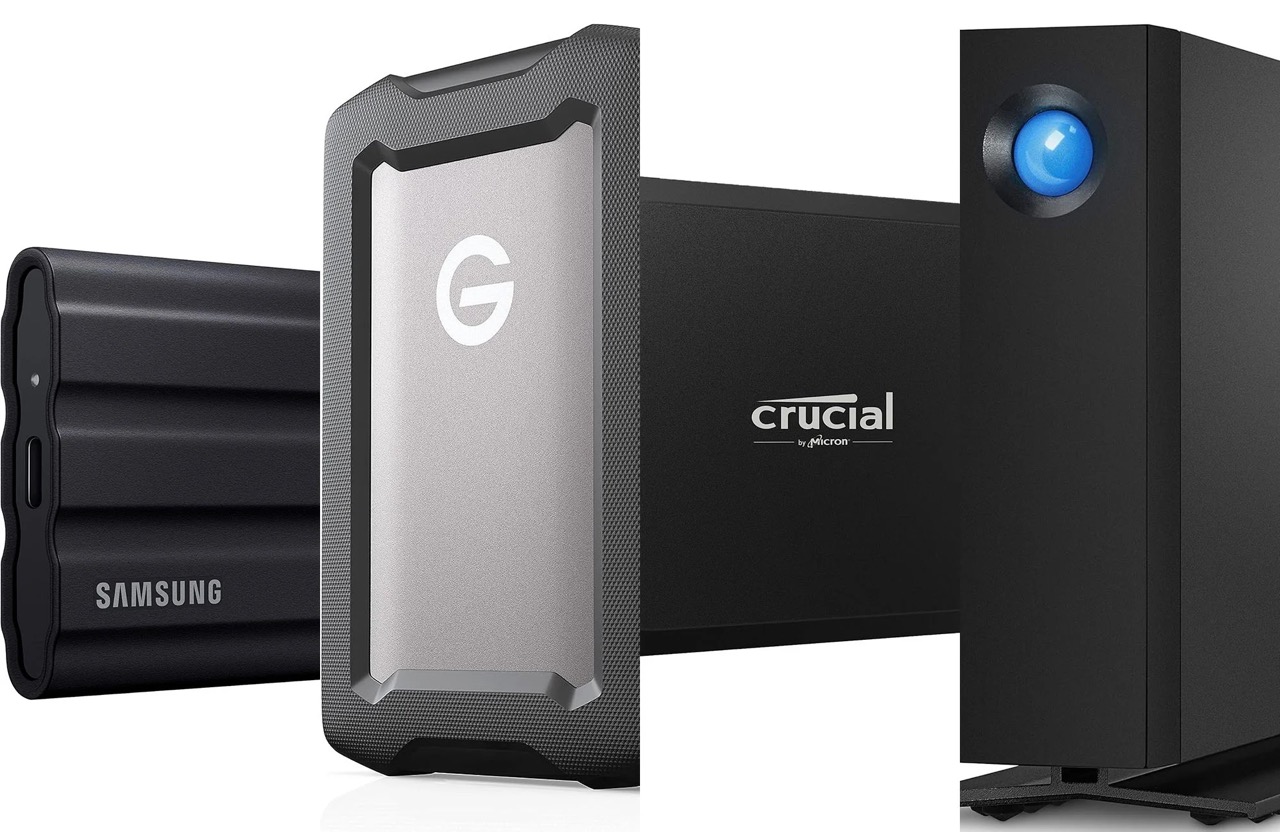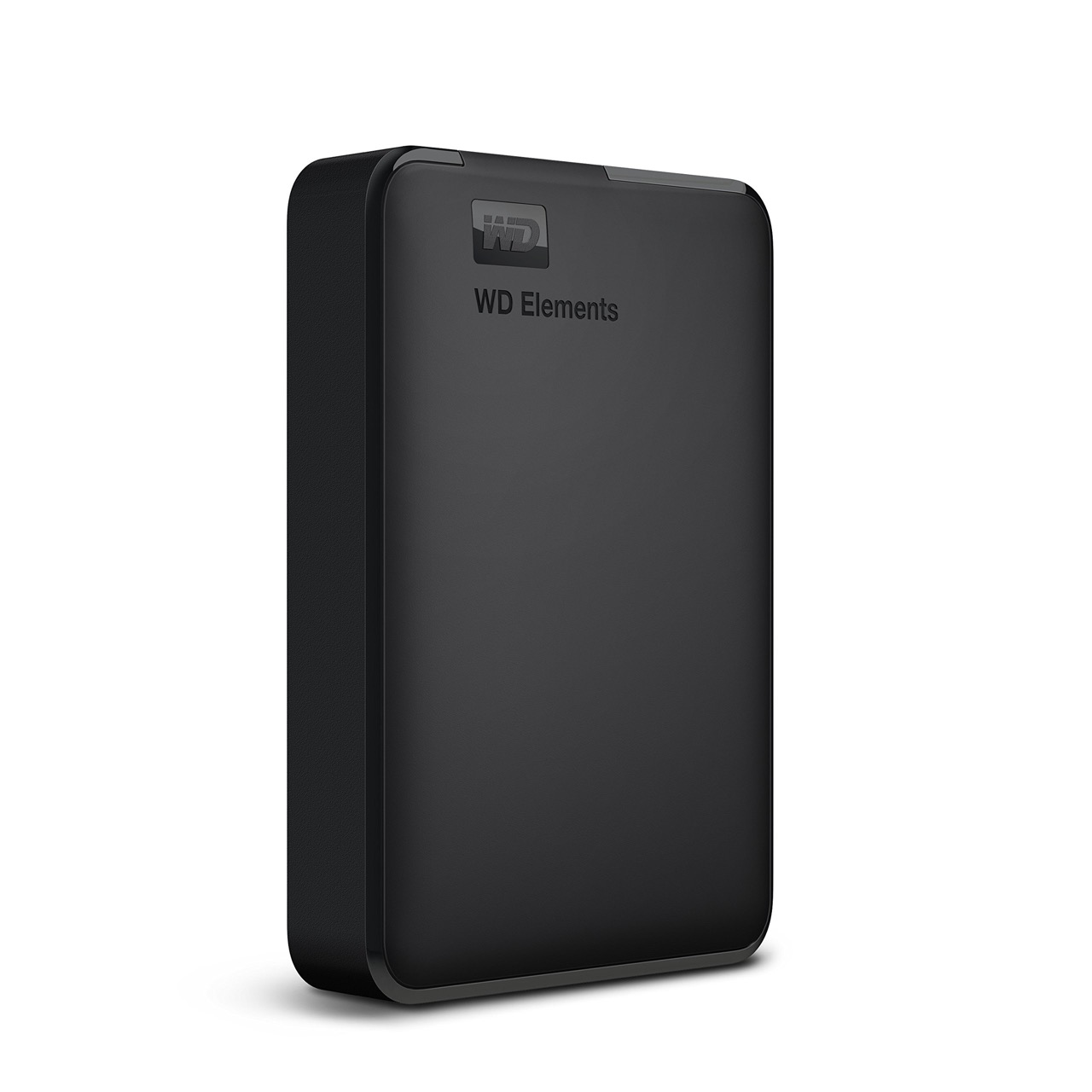Introduction
Welcome to our guide on how to check your hard disk drive (HDD) speed. The speed of your HDD plays a crucial role in determining the overall performance and efficiency of your computer system. Whether you are a casual user or an avid gamer, it is essential to ensure that your HDD is performing optimally.
When it comes to storage devices, speed matters. The HDD speed directly affects read and write operations, which in turn impact the loading time of applications and files. A slow HDD can lead to decreased productivity, longer boot times, and frustrating lag in games. Therefore, monitoring and understanding the speed of your HDD is vital in maintaining a smooth and efficient computing experience.
In this guide, we will explore different methods to check your HDD speed. We will cover built-in Windows utilities, third-party software, and the command prompt. Each method offers unique advantages, allowing you to choose the one that is most convenient and effective for your needs.
Furthermore, we will dive into the factors that can affect your HDD speed, such as disk fragmentation, available storage space, and the type of interface connecting your HDD to the computer. By understanding these factors, you can take steps to optimize your HDD performance and unleash its full potential.
Keep in mind that while HDD speed is crucial, it is not the only factor that determines the overall performance of your system. Other components, such as the CPU, RAM, and graphics card, also play a significant role. However, optimizing your HDD speed is a fundamental step in ensuring a well-rounded and efficient computer setup.
So, whether you are troubleshooting performance issues, evaluating the need for an upgrade, or simply curious about your HDD’s speed, this guide will provide you with the knowledge and tools to assess and optimize your HDD performance.
Why is it important to check the hard disk drive speed?
Checking the speed of your hard disk drive (HDD) is essential for several reasons. Let’s explore why it is important to monitor and assess your HDD speed:
- Performance optimization: The speed of your HDD directly impacts the overall performance of your computer system. A slow HDD can significantly decrease the loading time of applications, files, and operating systems. By checking the HDD speed, you can identify any bottlenecks and take appropriate measures to optimize its performance.
- Identifying hardware issues: Monitoring the HDD speed can help you detect any potential hardware issues. If your HDD speed suddenly drops or becomes inconsistent, it could indicate a failing or deteriorating hard drive. By identifying these issues early on, you can take immediate action and prevent data loss or system failure.
- Upgrade evaluation: Checking the HDD speed can also assist in evaluating the need for hardware upgrades. If you notice that your HDD is consistently performing below standards, it might be time to consider upgrading to a faster and more efficient storage solution, such as a solid-state drive (SSD). This can significantly improve the overall responsiveness and speed of your system.
- Optimizing file and data management: Understanding your HDD speed can help you make informed decisions regarding file and data management. If your HDD is slow, you may need to free up storage space, delete unnecessary files, or optimize data placement to ensure efficient read and write operations. By managing your data effectively, you can enhance file access and retrieval speed.
- Gaming and multimedia performance: Gamers and multimedia enthusiasts can benefit greatly from checking their HDD speed. Games and multimedia applications rely heavily on fast data access and streaming. If your HDD speed is subpar, it can result in frustrating lags, long load times, and choppy video playback. By ensuring that your HDD is performing optimally, you can enhance your gaming and multimedia experience.
Overall, checking the hard disk drive speed is crucial for maintaining a smooth and efficient computing experience. It allows you to optimize performance, diagnose hardware issues, evaluate the need for upgrades, streamline file management, and enhance gaming and multimedia performance. By taking the time to assess and understand your HDD speed, you can make informed decisions to ensure the optimal functioning of your computer system.
Method 1: Using built-in Windows utilities
Windows operating systems provide built-in utilities that allow you to check the speed of your hard disk drive (HDD) without the need for third-party software. Here’s how you can use these utilities:
- Task Manager: Task Manager is a powerful tool that offers insights into various system processes, including disk activity and performance. To access Task Manager, simply right-click on the taskbar and select “Task Manager” from the menu. In the “Performance” tab, click on “Disk” to view the disk usage and speed. You can monitor the “Disk Usage” and “Response Time” graphs to get an idea of how your HDD is performing.
- Resource Monitor: Resource Monitor provides in-depth information about system resources, including disk activity and speed. To open Resource Monitor, press the Windows key + R, type “resmon” (without quotes), and hit enter. In the Resource Monitor window, go to the “Disk” tab to view the current disk usage, response time, and other relevant details. You can also sort the processes by disk activity to identify any potential culprits causing high disk usage.
- Windows Performance Monitor: Windows Performance Monitor allows you to monitor various system performance metrics, including hard disk performance. To access Performance Monitor, press the Windows key + R, type “perfmon” (without quotes), and hit enter. In the Performance Monitor window, you can add the “LogicalDisk” counter under the “PhysicalDisk” category to monitor disk read/write speeds and other performance indicators.
These built-in Windows utilities provide valuable insights into your HDD speed and performance. They are convenient, readily available, and offer a good starting point for evaluating your HDD’s performance. However, keep in mind that these utilities may not provide detailed benchmarks and advanced diagnostics as compared to third-party tools. For more comprehensive analysis, you may consider using dedicated HDD speed testing software.
Now that you know how to utilize built-in Windows utilities to check your HDD speed, you can easily monitor and assess the performance of your hard disk drive. Analyzing the data provided by these utilities can help you identify any performance issues, troubleshoot problems, and optimize the overall speed and efficiency of your computer system.
Method 2: Using third-party software
If you want more comprehensive and detailed analysis of your hard disk drive (HDD) speed, using third-party software is a great option. Various tools are available that can provide in-depth benchmarks and diagnostics. Here are some popular third-party software options you can use:
- CrystalDiskMark: CrystalDiskMark is a widely used HDD benchmarking tool. It measures sequential and random read/write speeds, providing a detailed breakdown of your HDD’s performance. You can download CrystalDiskMark for free and run the benchmark to get an accurate assessment of your HDD’s speed. The results are presented in a clear and easy-to-understand format, making it ideal for both beginners and advanced users.
- HD Tune: HD Tune is another powerful and versatile utility for analyzing HDD performance. It provides a range of features, including benchmarking, health monitoring, and error scanning. With HD Tune, you can measure transfer rates, access time, and burst rate to gauge the overall speed of your HDD. Additionally, it offers real-time health monitoring, allowing you to spot any potential issues before they become critical.
- ATTO Disk Benchmark: ATTO Disk Benchmark is a popular tool for measuring HDD speed and performance. It focuses on testing data transfer rates at various file sizes, providing a detailed analysis of your HDD’s capabilities. This tool is commonly used by professionals and enthusiasts to assess the performance of storage devices, as it offers customizable settings and features for advanced benchmarking.
When using third-party software, it’s essential to ensure that you download and install it from reputable sources to avoid any potential malware or security risks. It’s also worth noting that different tools may yield slightly different results due to variations in testing methodologies. Therefore, it’s a good practice to run multiple tests with different software and compare the results for a more accurate understanding of your HDD’s speed.
By using third-party software tools like CrystalDiskMark, HD Tune, or ATTO Disk Benchmark, you can gain valuable insights into your HDD’s speed and performance. These tools not only provide detailed benchmarks but also help you identify any underlying issues, optimize performance, and make informed decisions about hardware upgrades or maintenance.
Method 3: Using command prompt
If you prefer using the command prompt to check the speed of your hard disk drive (HDD), Windows provides built-in commands that can provide you with valuable information about your disk’s performance. Here’s how you can do it:
- Open the command prompt: Press the Windows key + R, then type “cmd” (without quotes) and hit enter to open the command prompt.
- Enter the command: In the command prompt, type the following command and press enter:
wmic diskdrive get name,model,interfacetype
This command will display the name, model, and interface type of your hard disk drive. Make a note of the interface type as it can affect the speed of your HDD. - Check disk performance: To check the disk performance using the command prompt, you can use the following command:
winsat disk -drive "drive_letter"
Replace “drive_letter” with the letter corresponding to your HDD’s partition. For example, if your HDD is assigned the drive letter “C,” the command would bewinsat disk -drive "C". Press enter to execute the command.
The winsat command calculates the disk performance index by running a series of tests on your HDD. It measures parameters such as sequential read/write speeds, random read/write speeds, and access times. The results will be displayed in the command prompt window upon completion.
Keep in mind that the winsat command may take a few minutes to complete, depending on the size and speed of your hard disk drive. Once the process is finished, you can review the results to gain insights into your HDD’s performance and compare it to standard benchmarks.
By using the command prompt, you can gather valuable information about your hard disk drive’s name, model, interface type, and performance. This method provides a quick and straightforward way to assess your HDD’s speed without the need for third-party software. It can be particularly useful for users who prefer working with command-line tools or want a basic overview of their disk performance.
Factors that affect hard disk drive speed
Several factors can influence the speed of your hard disk drive (HDD). Understanding these factors is key to optimizing the performance of your HDD. Let’s explore some of the primary factors:
- Disk Rotation Speed: The rotation speed of the HDD’s platters plays a significant role in determining the speed at which data can be read or written. Common rotation speeds for consumer-grade HDDs are 5400 RPM (Revolutions Per Minute) and 7200 RPM. Higher rotation speeds generally result in faster data access and transfer rates.
- Interface: The interface through which the HDD is connected to the computer can impact its speed. The most common interface types for consumer-grade HDDs are SATA (Serial ATA) and NVMe (Non-Volatile Memory Express). NVMe offers significantly faster data transfer speeds compared to traditional SATA connections.
- Cache Size: HDDs often have a built-in cache to temporarily store frequently accessed data. The cache acts as a buffer, improving overall performance. A larger cache size allows for more efficient data retrieval, leading to faster read and write speeds.
- Disk Fragmentation: Over time, files on an HDD can become fragmented, meaning that they are stored in non-contiguous clusters. Fragmentation can slow down data access and retrieval since the read/write heads need to move to different areas of the disk to access a file. Regularly defragmenting your HDD can help optimize its performance.
- Available Storage Space: The amount of available storage space on your HDD can affect its speed. When a disk nears its capacity, it can lead to slower read/write operations. It’s advisable to maintain at least 10-15% of free space on your HDD to ensure optimal performance.
- HDD Age and Wear: Older HDDs may experience a decrease in performance as they age and accumulate wear and tear. Mechanical components may not function as efficiently, leading to slower read/write speeds. Monitoring the health and lifespan of your HDD is important to identify any performance degradation.
It’s important to note that the factors mentioned above primarily apply to traditional hard disk drives (HDDs) rather than solid-state drives (SSDs). SSDs have different characteristics and are typically faster due to their lack of moving parts. If speed is a critical consideration for your storage needs, considering an SSD upgrade might be beneficial.
By understanding these factors, you can take proactive steps to optimize your HDD’s performance. Regular maintenance, such as defragmenting the disk, monitoring available storage space, and keeping an eye on the HDD’s health, can help ensure that your HDD operates at its optimal speed for smooth and efficient performance.
How to interpret the speed test results
When conducting speed tests on your hard disk drive (HDD), it’s essential to understand how to interpret the results to gain insights into the performance of your storage device. Here’s a guide on how to interpret the speed test results:
- Sequential Read/Write Speed: This refers to the speed at which data can be read from or written to the disk in a continuous manner. Higher sequential read/write speeds indicate faster data transfer rates for large files. It’s particularly important for tasks like copying large files, video editing, or gaming where sustained data transfer is crucial.
- Random Read/Write Speed: Random read/write speed measures the speed at which the hard disk drive can access and manipulate small, scattered data across the disk. Faster random read speeds enhance the performance of applications that rely on quick data retrieval, such as launching programs or searching for specific files.
- Access Time: Access time is the time it takes for the disk to locate and start retrieving data. Lower access times indicate quicker response times and faster data retrieval. It’s particularly important in reducing lag and improving overall system responsiveness.
- Latency: Latency refers to the time delay between a request to access data and the start of data retrieval. Lower latency leads to faster response times, reducing the time it takes for the HDD to begin reading or writing data. Lower latency is ideal for tasks requiring quick data access, such as gaming or real-time applications.
- Burst Rate: Burst rate measures the maximum speed at which data can be transferred between the HDD and the computer’s memory cache. A higher burst rate indicates faster data transfers for short bursts of activity. It’s particularly important in scenarios where quick loading of small files or applications is necessary.
When interpreting the speed test results, it’s important to compare them against standard benchmarks for your HDD model or similar devices. Manufacturers often provide specifications and performance ratings that can serve as a reference point. Comparing your results to these standards can help determine if your HDD is performing optimally or if there are any performance bottlenecks.
Additionally, consider how the speed test results align with your intended usage. If you primarily work with large files, prioritize sequential read/write speeds. If you require quick access to scattered data or frequently open multiple programs simultaneously, focus on random read/write speeds and access time.
Remember that speed test results may vary depending on factors such as disk fragmentation, available storage space, and system configuration. If the speed test results are significantly lower than expected, consider optimizing your HDD’s performance by defragmenting the disk, freeing up storage space, or upgrading to a faster storage solution like a solid-state drive (SSD).
By interpreting and analyzing the speed test results, you can gain valuable insights into your HDD’s performance. This knowledge allows you to make informed decisions regarding system optimization, potential upgrades, and ensuring that your HDD meets your specific needs.
Tips to optimize hard disk drive performance
To ensure optimal performance and extend the lifespan of your hard disk drive (HDD), there are several steps you can take to optimize its performance. Here are some tips to help you maximize the speed and efficiency of your HDD:
- Regularly defragment your HDD: Over time, files on an HDD can become fragmented, meaning they are scattered across different locations on the disk. Defragmenting your HDD can reorganize these fragmented files, improving access and read/write speeds. Windows has a built-in defragmentation tool that you can use or opt for third-party software.
- Maintain sufficient free space: It’s crucial to have enough free space on your HDD for optimal performance. A general guideline is to keep at least 10-15% of your disk space free. This allows the operating system to carry out tasks efficiently and reduces the chances of fragmentation.
- Consider disabling unnecessary startup programs: Having too many programs launching at startup can impact your HDD’s performance by consuming resources and prolonging boot times. Review your startup programs and disable any that are not essential.
- Ensure your HDD is free from malware and viruses: Malware and viruses can significantly slow down your HDD. Regularly perform thorough scans using reliable antivirus software to detect and remove any malicious programs that might be affecting your HDD’s performance.
- Keep your HDD cool: Heat can adversely affect HDD performance and lifespan. Ensure proper ventilation and cooling for your computer to prevent overheating. Consider using additional cooling measures such as fans or liquid cooling systems, especially if you have multiple drives in your system.
- Use high-quality SATA cables and connectors: Faulty or low-quality SATA cables and connectors can impact the performance of your HDD. Ensure that you are using high-quality cables and connectors that provide stable and reliable connections.
- Regularly update your HDD’s firmware: Manufacturers often release firmware updates for HDDs that can improve performance and fix known issues. Check the manufacturer’s website for any available firmware updates and install them periodically.
- Consider upgrading to a solid-state drive (SSD): SSDs offer significantly faster read and write speeds compared to traditional HDDs. If speed is a top priority, consider upgrading to an SSD for faster boot times, quicker file access, and overall improved system performance.
Implementing these optimization tips can help you enhance the performance and longevity of your hard disk drive. By taking proactive measures, you can ensure that your HDD operates at its best, providing fast and reliable storage for your files and applications.
Conclusion
Checking and understanding the speed of your hard disk drive (HDD) is crucial for optimizing your computer’s performance and ensuring a smooth computing experience. By utilizing built-in Windows utilities, third-party software, and command prompt commands, you can easily assess your HDD’s speed and performance.
Factors such as disk rotation speed, interface, cache size, disk fragmentation, available storage space, and HDD age can significantly affect the speed of your HDD. By considering and addressing these factors, you can take proactive steps to optimize your HDD’s performance and extend its lifespan.
Interpreting the speed test results allows you to gain insights into your HDD’s read/write speeds, access time, latency, and burst rate. Comparing these results to industry benchmarks and aligning them with your specific usage requirements can help you evaluate your HDD’s performance effectively.
Additionally, implementing tips to optimize your HDD performance, such as regular defragmentation, maintaining sufficient free space, disabling unnecessary startup programs, and keeping your HDD cool, can further enhance the speed and efficiency of your HDD.
Lastly, if speed is a critical consideration, you may want to consider upgrading your HDD to a solid-state drive (SSD) for even faster performance and improved system responsiveness.
By integrating these checks, understanding the results, and implementing optimization techniques, you can ensure that your hard disk drive operates at its optimal speed, providing you with a reliable and efficient storage solution for all your computing needs.







